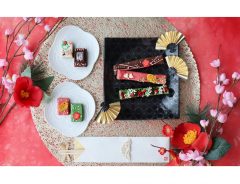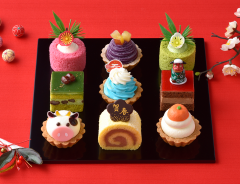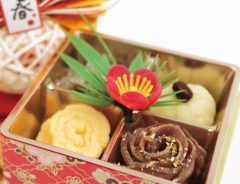Related Article
-

Cafe OHZAN’s kawaii New Year sweets are available to order online!
-

Adorable Chinese Zodiac Doughnuts from Krispy Kreme Japan Promise a Lucky New Year
-

Gorgeous New Year cake set from Japanese confectioners is inspired by Mount Fuji and Chinese Zodiac
-

Krispy Kreme Japan marks Year of the Rabbit with adorably auspicious doughnut lineup for 2023
-

Lucky coin chocolates usher in the Year of the Tiger at Japanese 7-Eleven convenience stores
-

Enjoy the New Year with the whole family with this dog friendly Osechi-ryōri



Japan is getting more and more attention due to the Olympics that will be held in 2020 and people from overseas are also getting more interested in Japanese customs and culture.
One of the most important parts of Japanese tradition is represented by the Japanese New Year, or oshōgatsu お正月, when families gather together for dinner and go to pray after midnight.
Welcoming Toshigami-sama into the house
During New Year's in the Japanese tradition, the Toshigami-sama 年神様 is welcomed into Japanese houses. He is the kami 神 (god) who controls fertility and comes at the beginning of the year to bring good wealth and a good year to the people.
All the decorations and customs before New Year's are said to be preparations to welcome Toshigami-sama.
Japanese traditionally welcome him into their homes, wholeheartedly look after him and lastly, send him off.
Osōji (cleaning the house)
On the 13th of December, the preparations begin with susu-barai 煤払い (otherwise known as osōji お掃除 or house cleaning) because the god likes it to be clean. It is important to clean well around the places that have water such as the kitchen (so that he helps you live well and supports your family) and bathrooms/toilets for overall health.
Kadomatsu and other auspicious ornaments
After cleaning the house, Japanese people put up decorations such as kadomatsu 門松 (gate pine) in front of their homes to welcome the kami.
Kadomatsu are put in pairs at the entrance of their homes after the 25th of December and left there until the 7th of January.
Other auspicious decorations like shimekazari しめ飾り (a traditional New Year's ornament made with bamboo and pine branches), plastic cranes, etc. can also be seen around the house during this time of the year.
Offerings: kagami-mochi
Offerings like kagami-mochi 鏡餅 (two roundly shaped rice cakes, placed one on top of the other, and a daidai 橙, or Japanese bitter orange, on top) cannot be left out during oshōgatsu. They are removed on the 11th of January and eaten after the "mirror opening" (kagamibiraki 鏡開き) ceremony in which the mochi is broken.
Visiting the shrine or temple
On the 1st of January, many people go to see the first sunrise of the year, said to bring good luck, as well as visit a Shinto shrine or Buddhist temple, pray for good luck in the new year, buy an amulet for luck, protection or health, and maybe an o-mikuji おみくじ (random fortune paper you can choose from a box at either shrines or temples) to see how lucky they will be that year.
Games and traditional dishes
During New Year's, some families play a traditional game called "Fuku Warai" 福笑い (lucky laugh) where players have to put parts of the face such as nose, eyes, etc. onto a blank face left on the table (very similar to the "pin the tail on the donkey" game).
During New Year's, Japanese people have osechi-ryōri お節料理, traditional cuisine enjoyed during this time of the year which consists of sets of small bento boxes and various Japanese dishes. They all have symbolic meanings and are intended to bring good fortune and prosperity to those who eat them.
Hopefully, you now have a better understanding of how Japanese New Year's is celebrated here. If you have the chance, you could try celebrating it too!